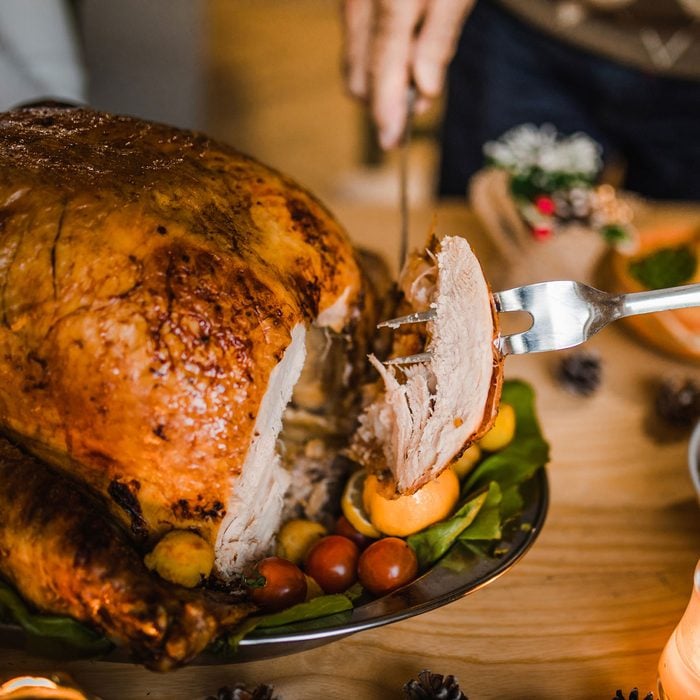We’re sharing Thanksgiving advice directly from Taste of Home readers and our Test Kitchen. Use our timeless turkey tips to cook a Thanksgiving turkey that will impress the whole family!
31 Turkey Tips Everyone Should Know This Thanksgiving
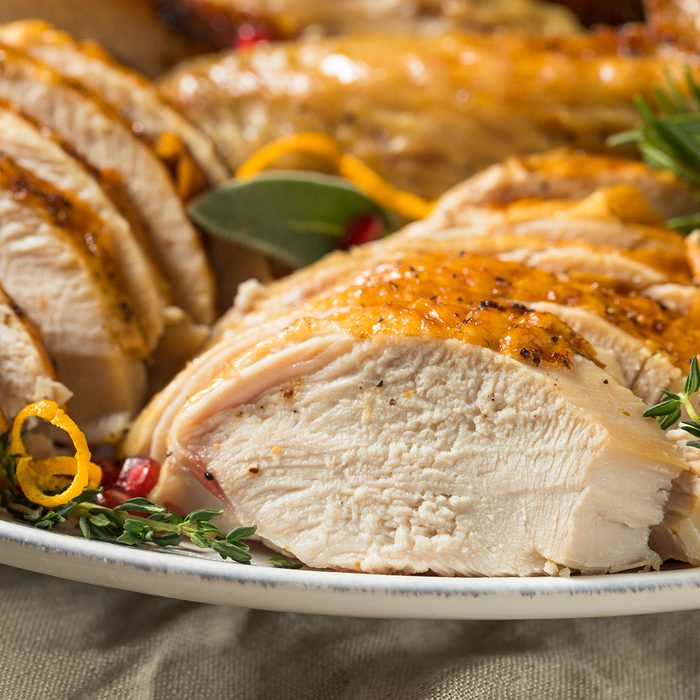
Buy extra meat
Make sure you don’t get left holding the last turkey wing. “At Thanksgiving, I often buy a turkey plus a turkey breast so there will be plenty of white meat for everyone,” says reader Lisa Tucker of Streator, Illinois. We have plenty of leftover turkey recipes for repurposing what’s not eaten up the day of! To know how big a turkey to start with, here’s how much turkey to make per person.
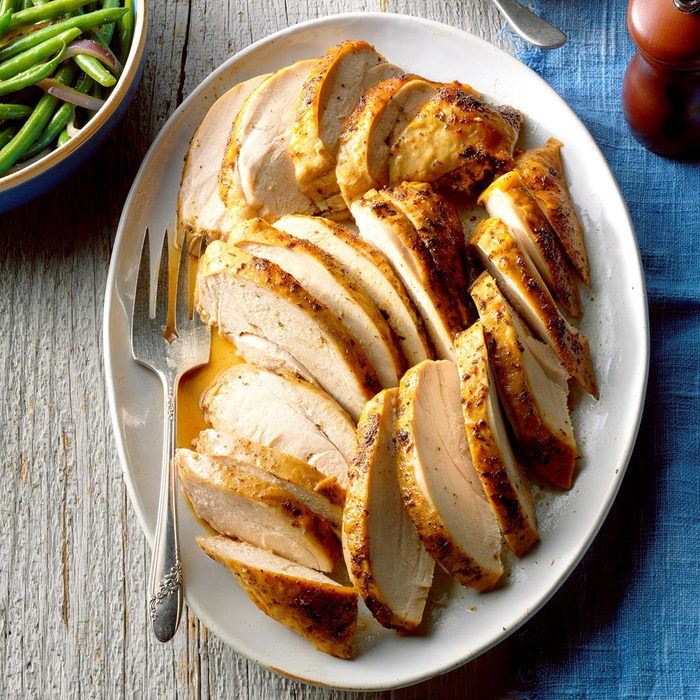
Get all white meat
Not a fan of dark meat or turkey legs? Have all white meat by cooking a turkey breast instead. Order a whole, bone-in turkey breast from your butcher. It cooks through more quickly than a whole bird, and it’s a great option to feed a small number of people. We like this recipe for Herbed Roast Turkey Breast.
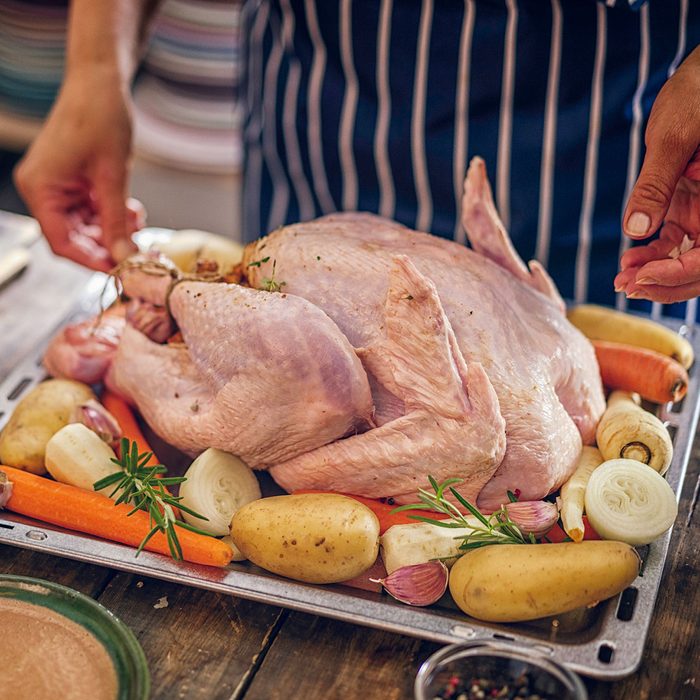
Budget time to thaw turkey
Thawing a frozen turkey safely is the key to a happy Thanksgiving—no one wants food poisoning after such a lovely feast, after all. The average 16-pound turkey takes about four days to fully thaw, so make sure you set aside an appropriate amount of time for defrosting.
Editor’s Tip: When you buy your turkey, set an alarm or reminder in your phone for when you need to remove the turkey from your freezer and transfer it to the fridge.
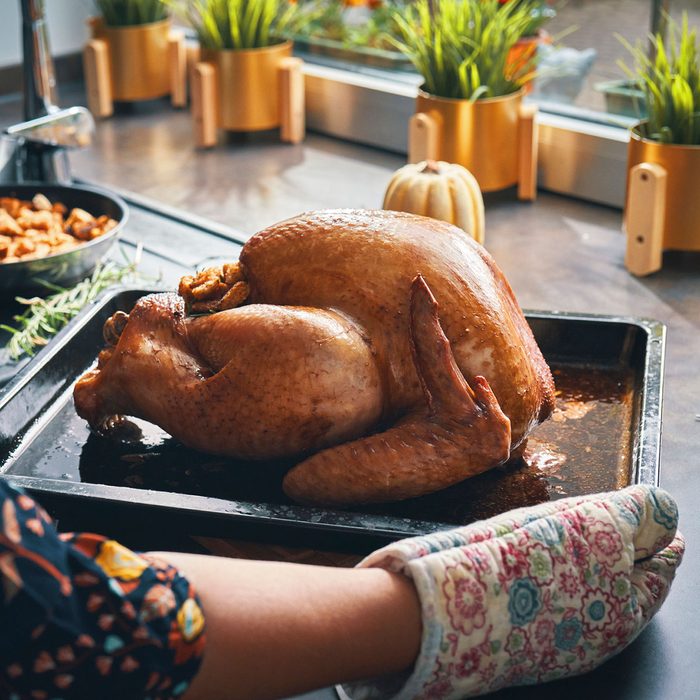
Roast two turkeys instead of one
Need to cook a lot of turkey but don’t have the space in your oven for a huge bird? Try cooking two smaller turkeys instead of one large one. This is also a good tip if you’re a first-time host for Thanksgiving. Smaller birds are less intimidating when it comes to cooking safely.
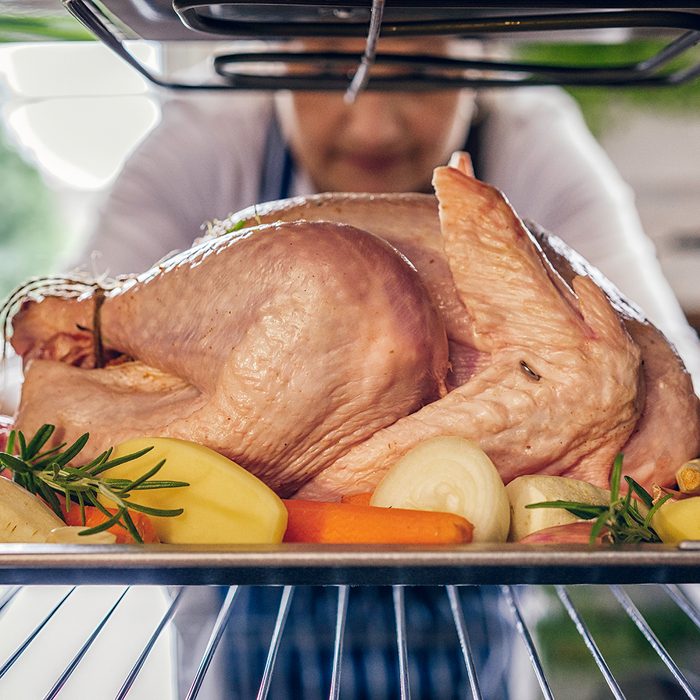
Move the oven rack
Ideally, any food you’re baking or roasting should be in the center of the oven to ensure even cooking throughout. Position your oven rack so the center of the turkey is in the center of your oven. For a large bird, this may mean moving your oven rack down a notch. Don’t miss our full guide on how to cook a turkey, including a bunch of tips from our Test Kitchen.
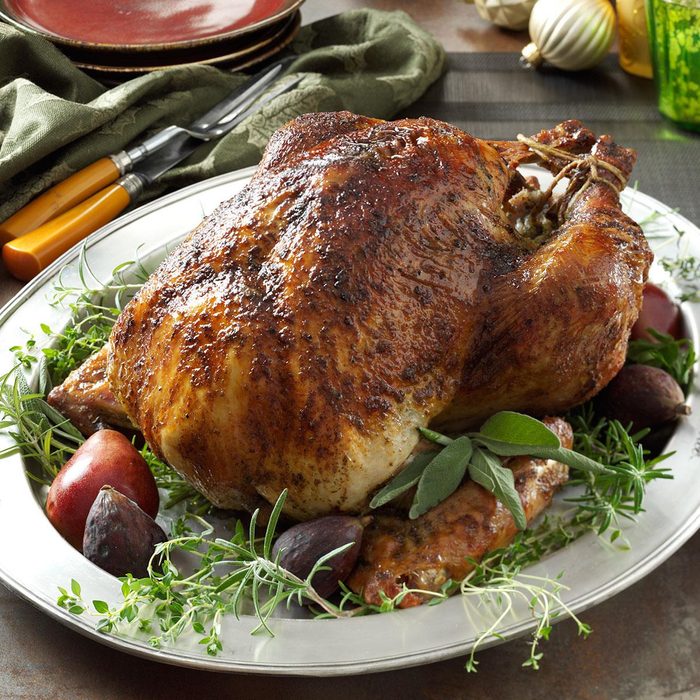
Brine your turkey
Brining turkey has become a lot more popular recently, and with good reason! Let your turkey sit overnight in a brine of water, salt and seasonings to give the turkey meat a big boost in flavor. Not enough room in your fridge? Use a large beach cooler to hold your brining turkey. These are our favorite turkey brine recipes.
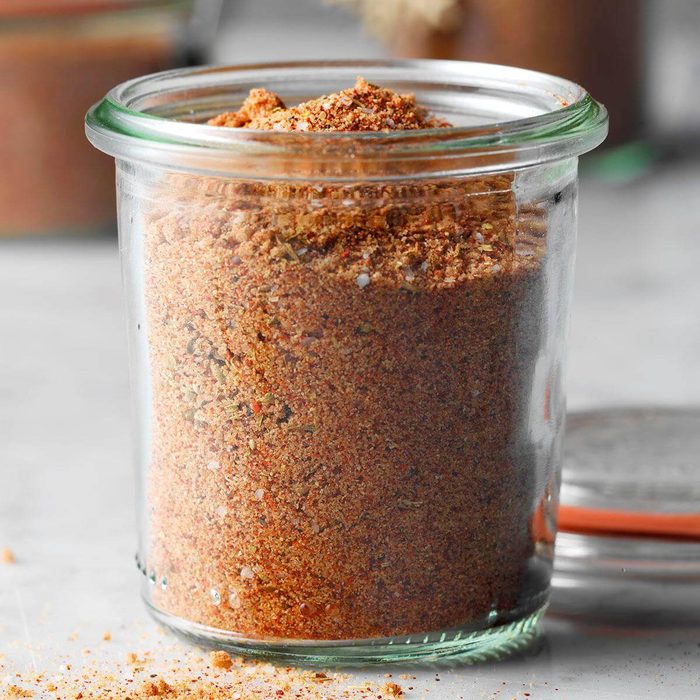
Try a dry brine
A dry brine gives your turkey the same advantages as a wet brine—juicy meat and lots of flavor—but without the mess of soaking your turkey in water. One to three days before cooking, rub your turkey all over with a mixture of salt, sugar and seasonings, then refrigerate. The salt penetrates the meat to draw up and redistribute juices, making the turkey really moist and tasty.
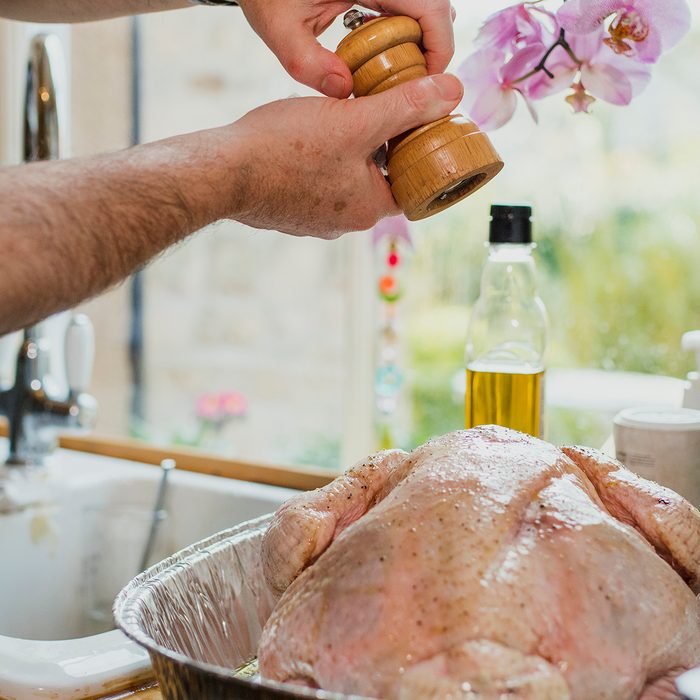
Dry the bird
This is a tip that’s often overlooked, but it’s so important if you want really crispy skin. Excess moisture on the surface of the turkey creates steam in the oven—and results in soggy skin. Use paper towels to pat dry the entire outside of the turkey before seasoning and roasting. You can also use a hairdryer.
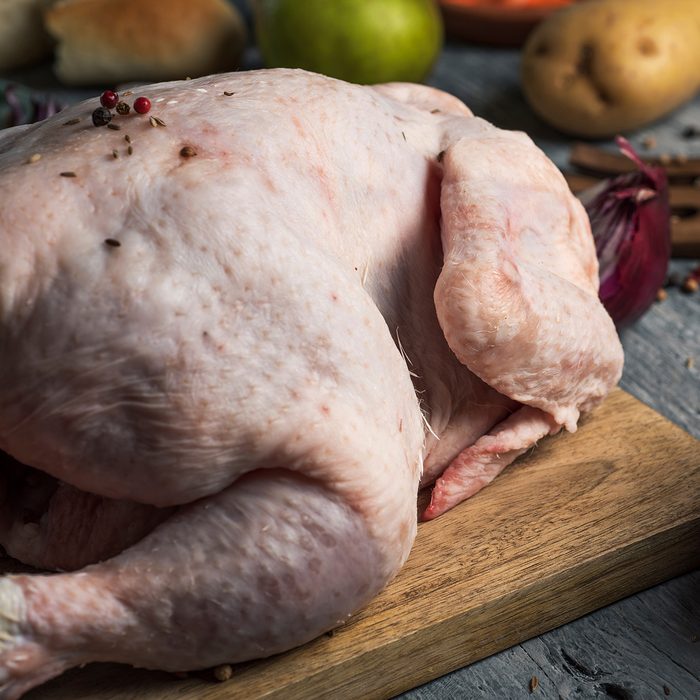
Season under the skin
Reader Mandi Wood of Eastanollee, Georgia writes, “I think it’s wise to lift the turkey skin, rub the seasonings onto the meat and place fresh herbs along with it. Then, place the skin back down and coat it with butter. Rub more seasoning and fresh herbs on top of the butter-slathered skin. The butter adds a golden crispness.”
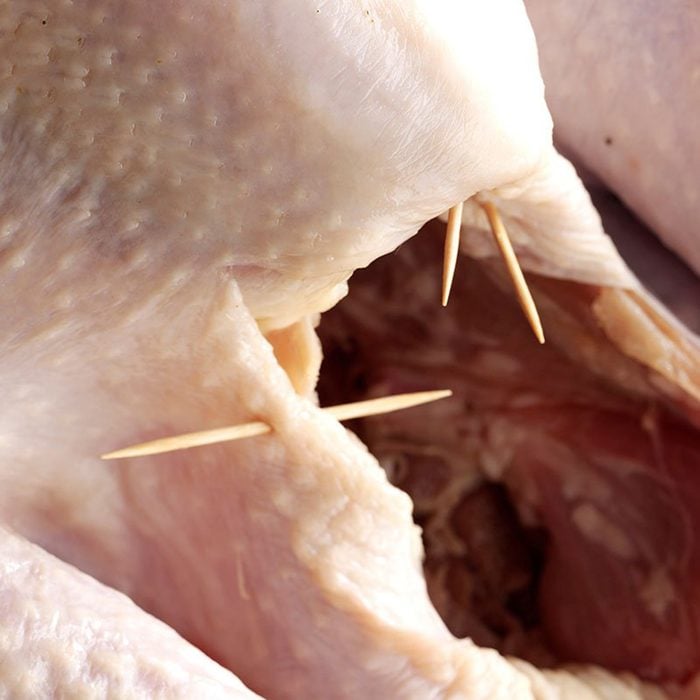
Pin the skin
This turkey tip will keep the skin from shrinking back during cooking, exposing and drying out the meat. Use toothpicks to pin the skin to the meat underneath, or to pin the skin closed over the cavity. You can also use this trick to secure tears in the skin.
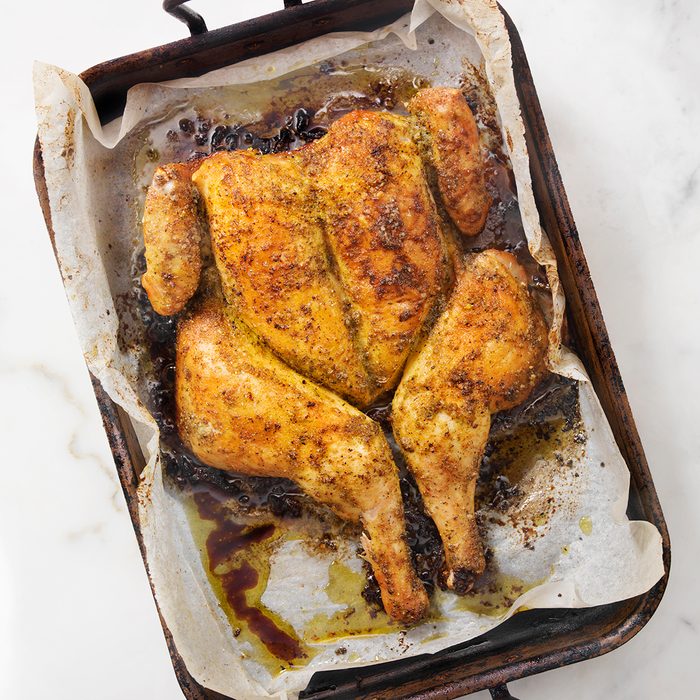
Spatchcock your turkey
Want all these turkey tips to really shine? Try learning how to spatchcock a turkey this Thanksgiving. It exposes more of the meat inside the bird, allowing you to add even more herbs and seasonings so there will be more flavor in every bite.
If you’re looking for more ways to cook your bird, here’s how to cook turkey in an oven bag and how to smoke a turkey too.
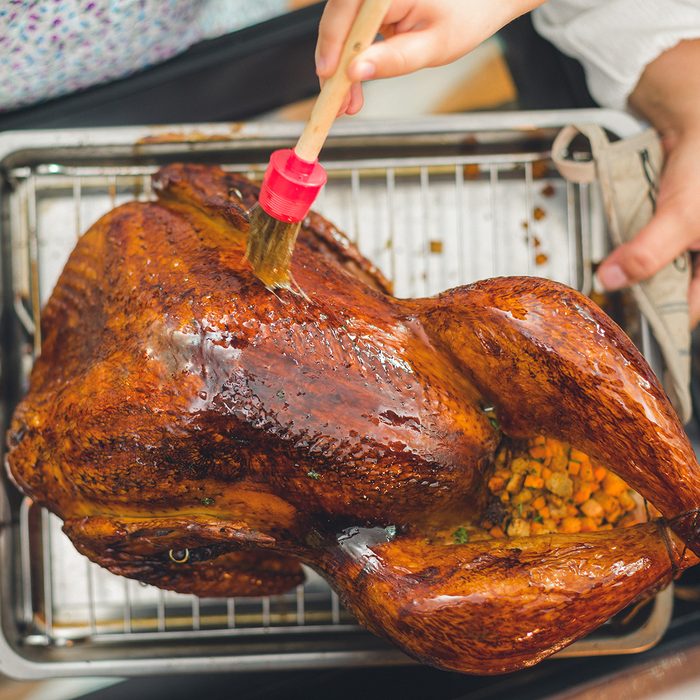
Add a glaze to help with browning
To get an even, rich brown color over the whole turkey without overcooking, use a glaze. With a basting brush, dab molasses, honey or jam onto lighter areas to speed up browning.
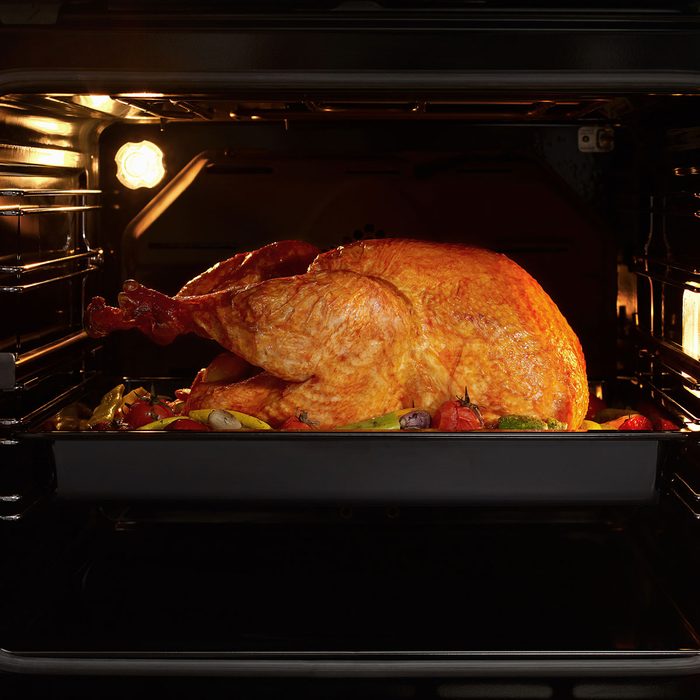
Don’t baste your turkey
While you might be tempted to follow grandma’s lead and baste your turkey while it cooks, our Test Kitchen doesn’t recommend this practice. Every time you open the oven door to baste the turkey, it cools down the internal temperature of the oven, thus increasing the cook time. Increased cook time means a drier turkey.
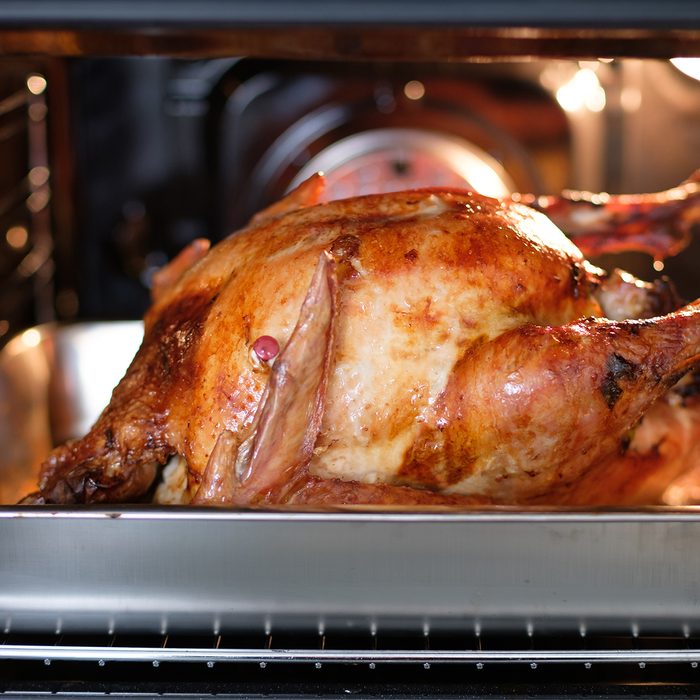
Roast turkey the night before
Preparing a large meal like Thanksgiving dinner can be stressful. Susan McClure of Nimes, France says, “Save the last-minute rush when you’re serving turkey and stuffing to a large group. Roast the turkey the day before, carve it and store the meat and stuffing separately in the refrigerator. Reheat the food with an improvised steamer. Place the turkey and stuffing in mesh baskets or metal colanders over saucepans filled with water or broth. Steam until warmed through.”
You can also reheat turkey using the oven or microwave.
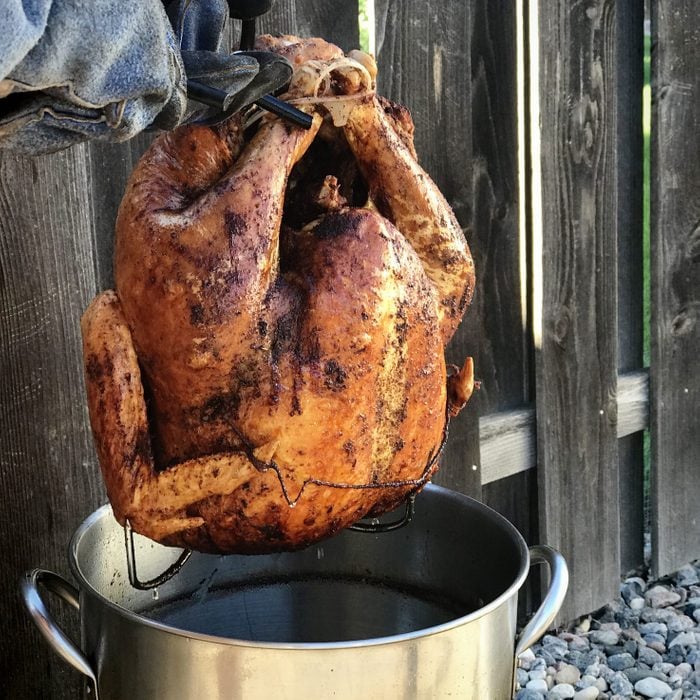
Deep fry your turkey
It only takes three to four minutes of cook time per pound to deep fry a turkey. It also results in a bird that’s tender and juicy! Just be sure to follow the safety tips in our guide to making deep-fried turkey.
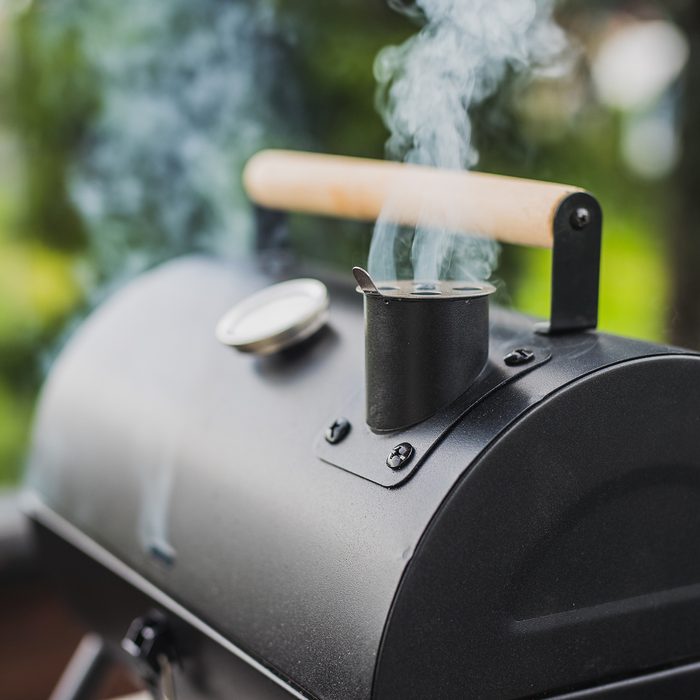
Fire up the grill
“In 1972, Mom had just put the turkey in the oven when the power went out. We had to get creative, so we used our charcoal grill to cook the turkey. The grill provided us with the most memorable Thanksgiving we’ve ever eaten,” says Dianne Nachtigal of Avoca, Wisconsin. Learn how to grill a turkey with our guide full of tips and tricks.
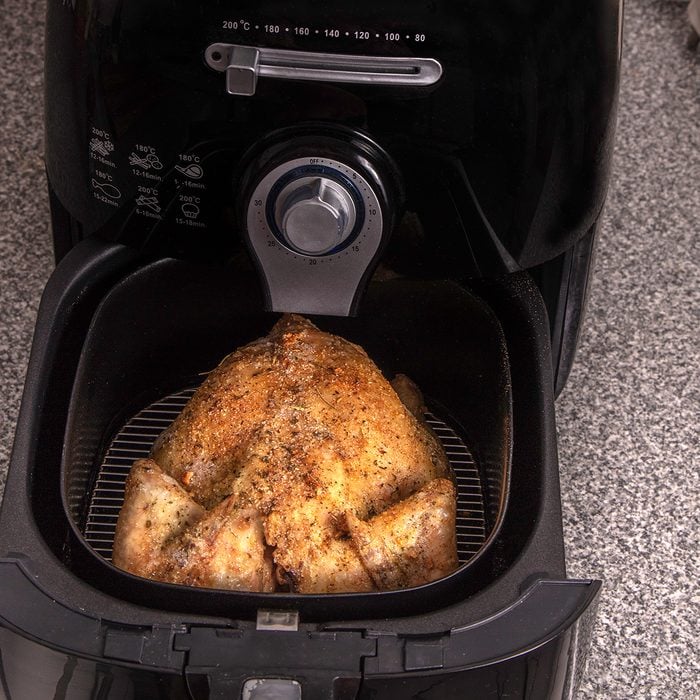
Cook turkey in an air fryer
Cooking a turkey breast this Thanksgiving, either for a small gathering or for extra meat? Learn how to cook an air fryer turkey breast. Just season and oil your bone-in turkey breast and cook it in your air fryer until it registers 165°, flipping it once during cooking. It’s easy!
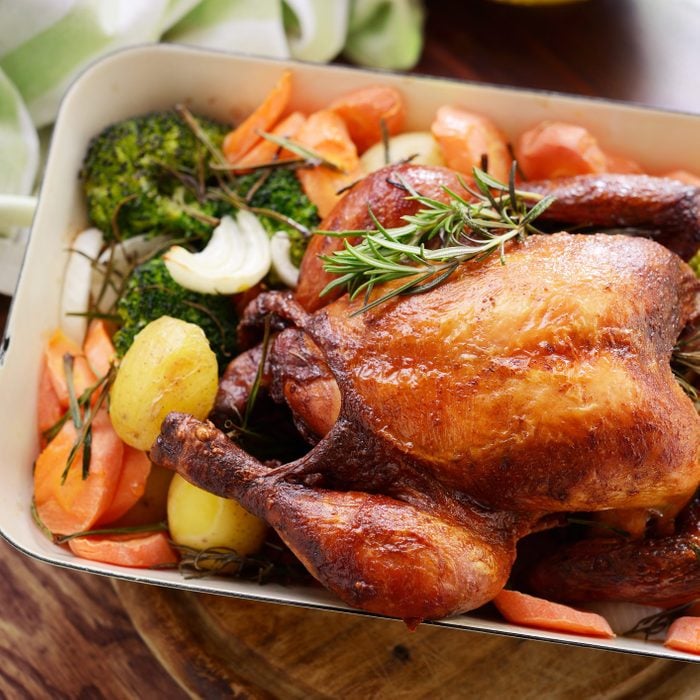
Roast the turkey on a bed of vegetables
Here’s a tasty turkey tip! You can create a roasting rack out of carrots, celery and sliced onions. Arrange them in the bottom of the roasting pan, then place your turkey on top. The vegetables will allow heat to flow under the turkey for even cooking, and they’ll flavor the drippings for your Thanksgiving gravy too.
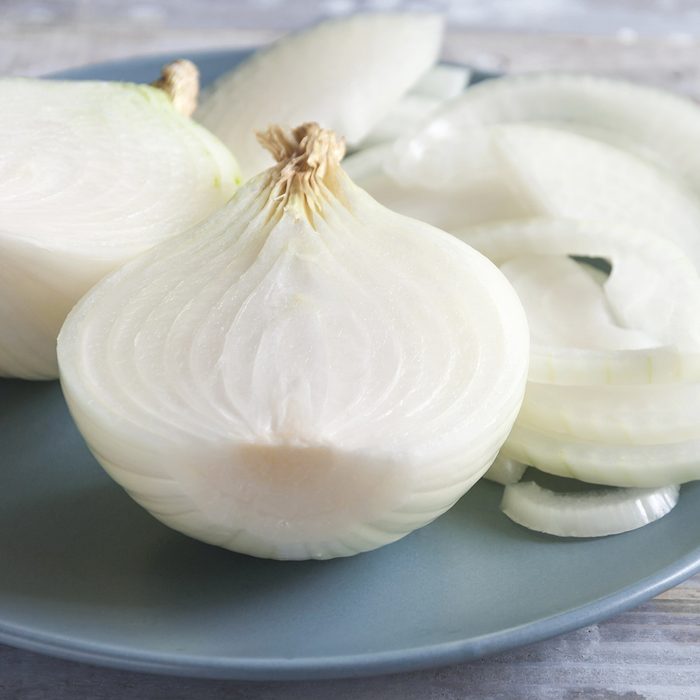
Add an onion
“My mother-in-law always put a quartered onion inside the turkey to add flavor. I do the same thing,” says reader Connie Thompson of Blackfoot, Idaho. Read up on more things to put in your turkey (that aren’t stuffing).
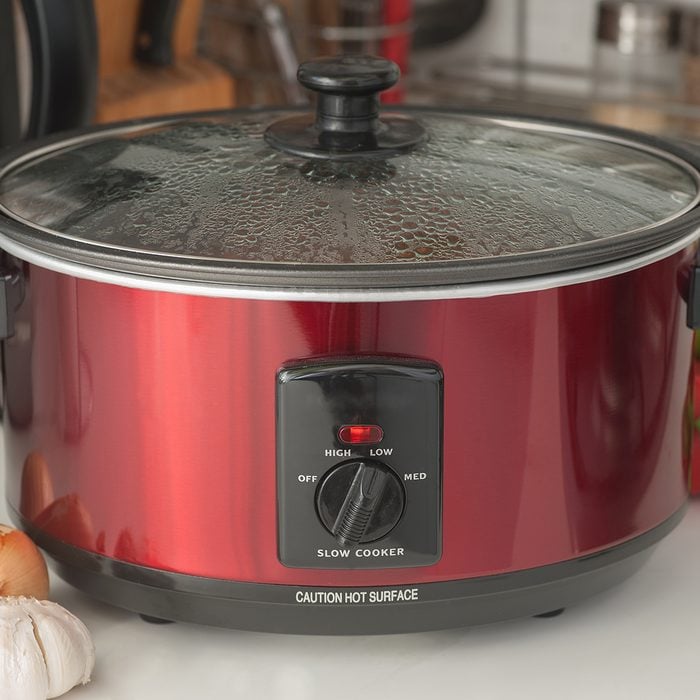
Cook giblets in your slow cooker
“To get Thanksgiving dinner started quicker, I put the giblets in the slow cooker the night before, with enough water to cover, and simmer them overnight,” says Terri Faas of Lompoc, California. “The next morning, they’re ready to be chopped and added to the dressing mixture, as is the hot broth.” Check out more ways to prep Thanksgiving dinner in advance.
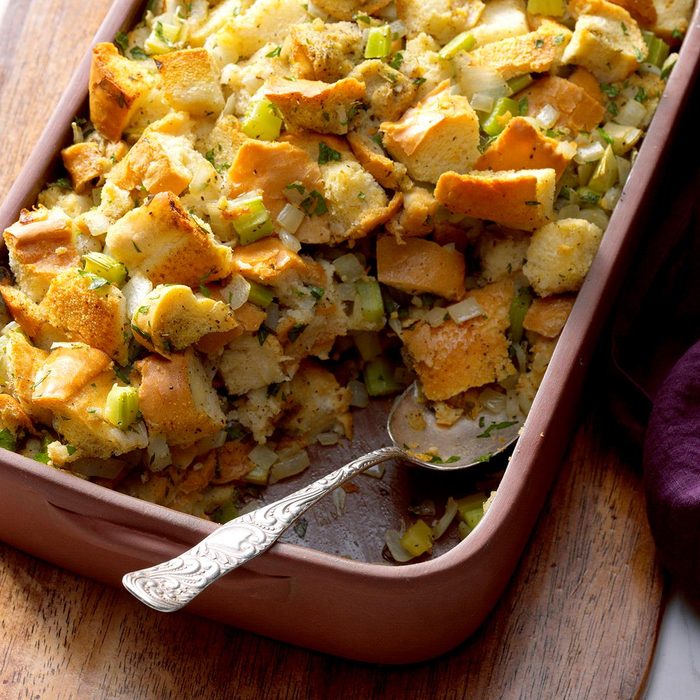
Cook stuffing separate from the turkey
There are strong opinions about whether stuffing should be cooked inside or outside the bird. The fact is, cooking stuffing inside the turkey can be dangerous. Stuffing the turkey will make it take longer to cook, increasing the likelihood that the turkey will be overcooked and the stuffing undercooked.
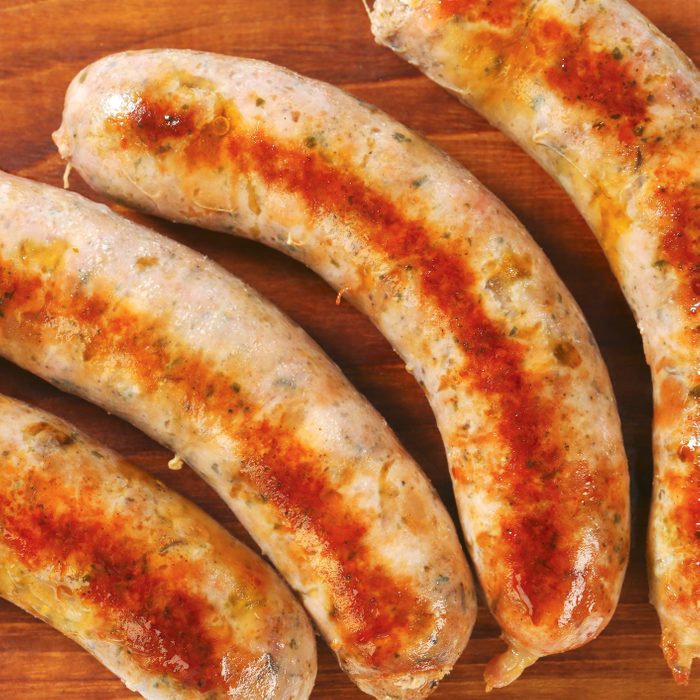
Add breakfast sausage
“This tradition dates to my great-grandmother. It makes the turkey very moist while adding subtle flavor,” says reader Wendy Lee Paffenroth of Pine Island, New York. Turn it into a “porcupine!”
Cut breakfast sausage links in half. Skewer links with plain wooden toothpicks and stick them in the turkey all over. Add an inch of water to the bottom of your roasting pan, cover bird with foil and place in oven. Roast as usual. About 1-1/2 hours before the meal, remove the sausages and serve them as appetizers. Continue roasting the bird, adding water as necessary, until it turns golden brown and tests done.
This is one of the more creative ways to season a turkey.
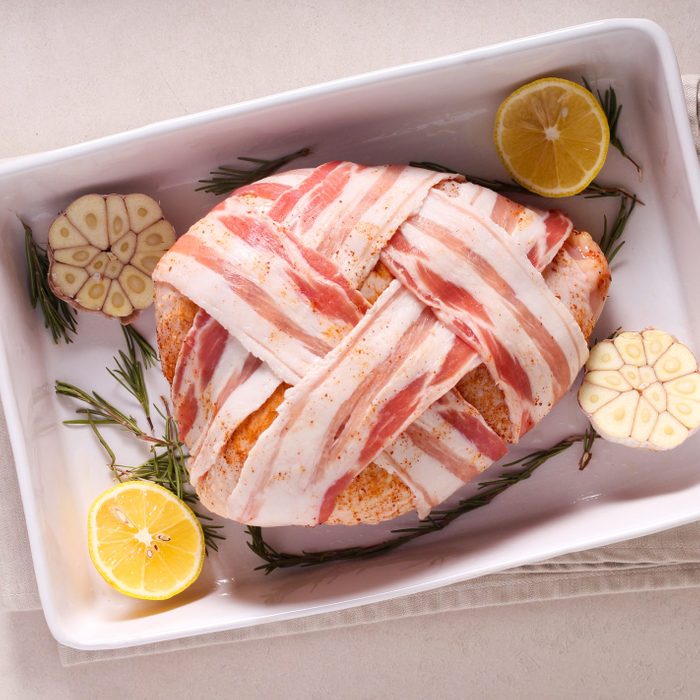
Wrap it in bacon
Not only does making a bacon-wrapped turkey keep the meat moist and flavorful, it gives you bacon on the side. Cover the turkey with strips of raw bacon, or with bacon strips woven together. As the turkey roasts, the sizzling bacon continuously coats the meat in flavorful drippings that keep moisture in. It adds bacon flavor to the gravy, too.
Check out these gravy boats for your Thanksgiving table.
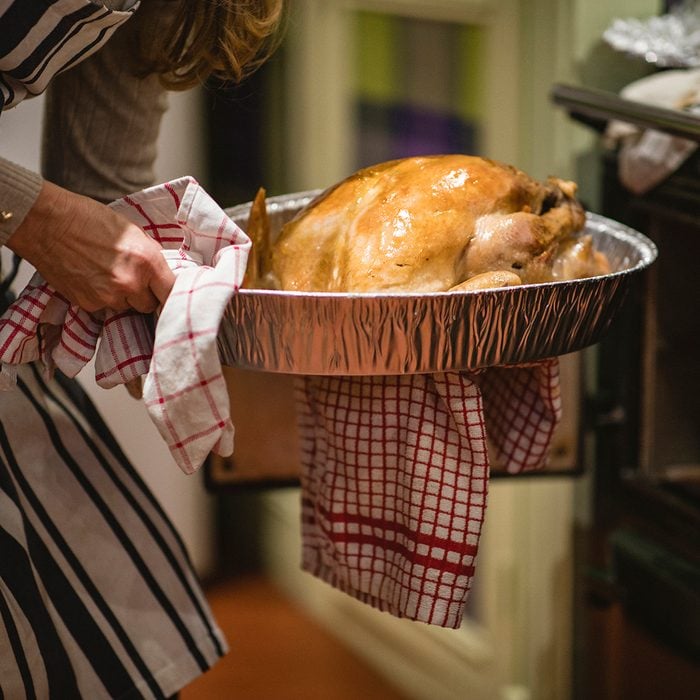
Roast the legs first
Slide the turkey into the oven legs first. The reason? Oven temps are often warmer near the back. The thighs will get the higher heat they need, while the breast cooks in the lower heat by the door. This temperature difference is key for perfect texture and flavor.
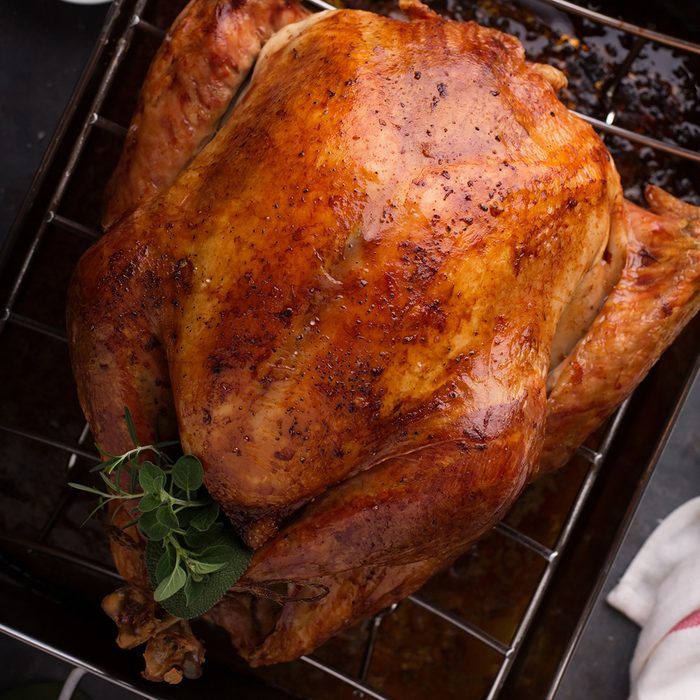
Flip it over
Don’t let the turkey dry out! “For moister white meat, turn the turkey on its breast while roasting,” says reader Lorna Jacobsen of Arrowwood, Alberta, Canada.
Don’t make these common mistakes when cooking turkey.
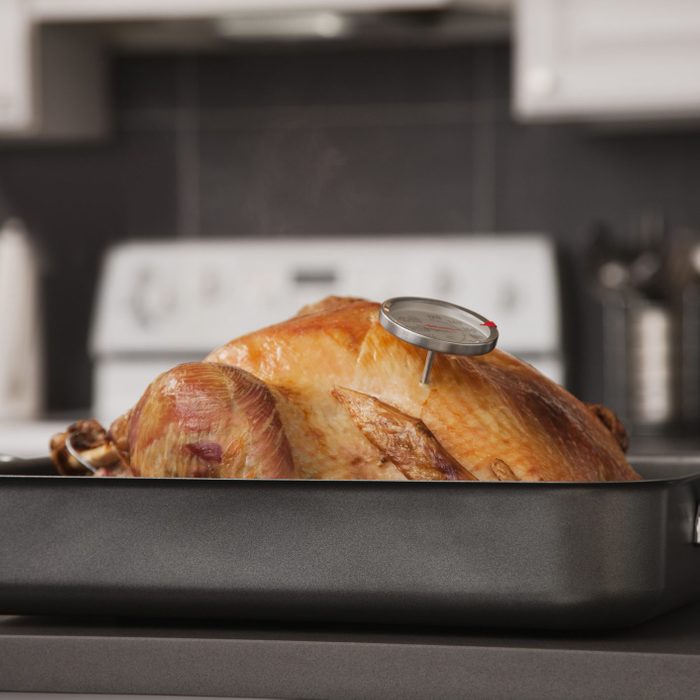
Use a meat thermometer
Cooking charts are helpful for planning, but using a meat thermometer is your best bet to know exactly when to pull that bird from the oven. Our Test Kitchen loves this ThermoWorks Classic Thermapen—it might be a splurge, but it gets a very accurate read (crucial for not drying out your bird!). To prevent any burns on Thanksgiving day, you can remove the turkey from the oven before taking its temperature. Insert the tip into the thickest part of the thigh. When the thigh reads 175°F and the breast reads 165°, it’s good to go.
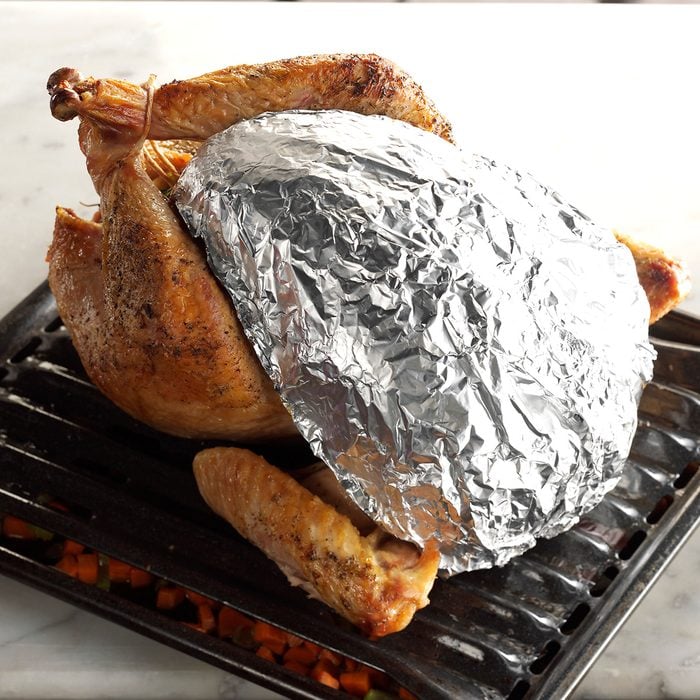
Tent with aluminum foil
According to reader Margaret Dahlgren of Bird Island, Minnesota, “The best way to roast an unstuffed turkey is in a shallow roasting pan with a tent of heavy-duty aluminum foil over it. Roast at 325° for 15 to 20 minutes per pound. After roasting, let the turkey stand for 15 to 20 minutes before carving.” Here’s how to pick the best roasting pan for your kitchen.
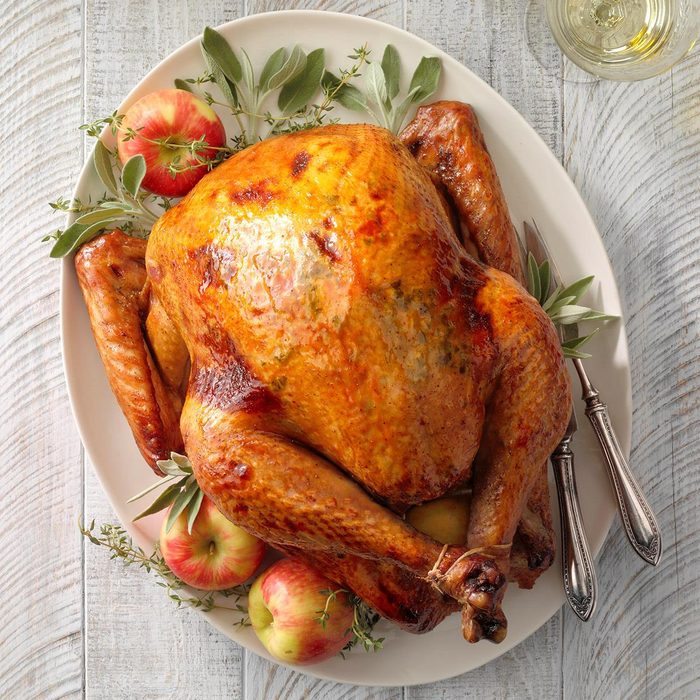
Let the turkey rest
This Thanksgiving turkey tip accomplishes two things. First, it lets the turkey finish cooking the last few degrees without losing moisture in the oven. It also lets juices near the surface redistribute back into the meat, so they aren’t lost to the cutting board when you begin carving.
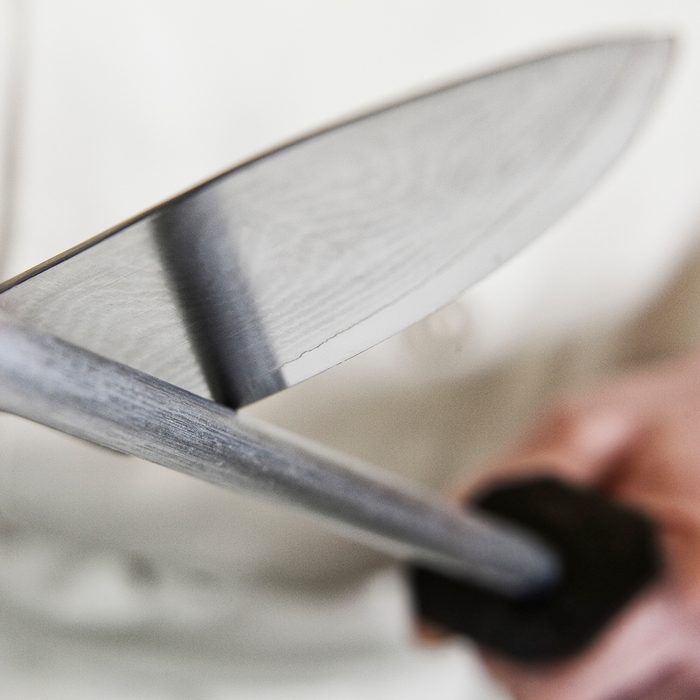
Sharpen your knife
You spent so much time getting your turkey perfectly roasted. Don’t get held up at serving time by dull knives! Sharp knives make it easier to carve the turkey breast and separate legs, thighs and wings. Have your carving knife professionally sharpened or pick up your own knife sharpener. Or, you could pick up the best electric knife, according to our Test Kitchen.
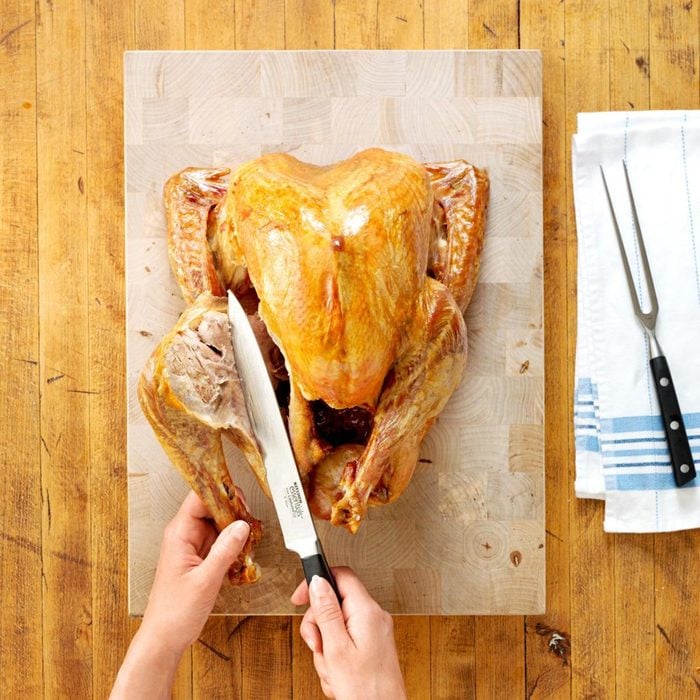
Carve your turkey correctly
It can be daunting to make the first cut into that beautiful turkey! Now’s the time to learn how to carve a turkey—you’ll be surprised how easy it is to get every bit of meat off your bird.
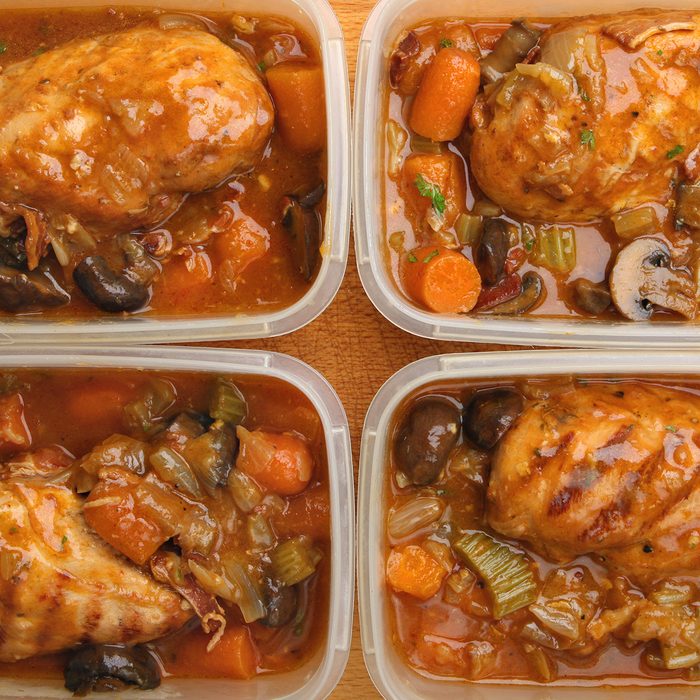
Freeze the leftovers
Let no turkey go to waste! “Dice up leftover turkey and freeze in 1-1/2 cup portions for quick casseroles or to toss in salads,” says reader Julie Beth Lamb of Lindsey, California. Here’s how long Thanksgiving leftovers will last.


